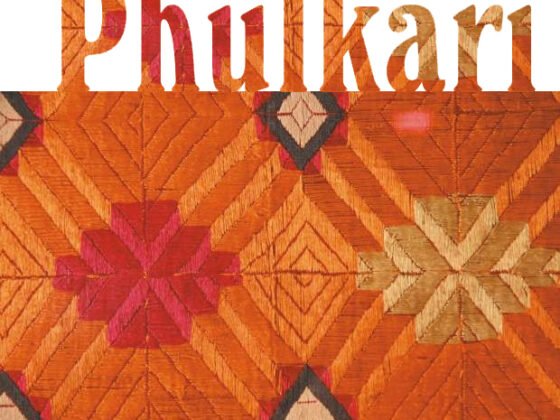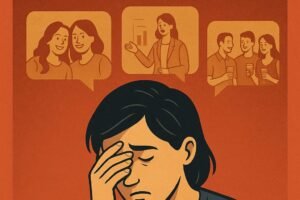Satnam Singh Hitkari’s museum keeps the Nation’s heritage alive.
Talking about his life, he revealed that he had made seventeen types of collections, which were unique in the sense that no similar collections existed in India either in variety or in quality. The Limca Book of Records in its 1993 edition had declared him ‘Man of the Year’ on its front page. All India fine Arts and Crafts Society (AIFACS), the premier Art institution of India had awarded him the title of Kala Rattan.
In December 2007, I got a phone call from Satnam Singh Hitkari (1919-2008), asking me to visit his Museum. I had known this multi-faceted personality for more than three decades and was aware of the various activities he had been involved in, during this period. I was proud to have been associated with him in a humble way and having been able to nurture a very cordial relationship with him. His charming and supporting wife late Shanta Hitkari (to me Ammiji), had played host to several of my visits to the Hitkaris. I have also had the privilege of getting the blessings from Mr. Hitkari’s mother on several occasions.
I am witness to the yearly exhibitions that he used to hold immediately after his retirement as commissioner of Income Tax in the year 1977. I was always curious to know what was coming next and which dignitary would inaugurate the exhibition. A galaxy of personalities from a cross section of Society included Indira Gandhi, with Sonia, Maneka and Priyanka in tow; Chandra Shekhar, Hidayatulla, Jagmohan, Amrita Pritam etc.
Talking about his life, he revealed that he had made seventeen types of collections, which were unique in the sense that no similar collections existed in India either in variety or in quality. The Limca Book of Records in its 1993 edition had declared him ‘Man of the Year’ on its front page. All India fine Arts and Crafts Society (AIFACS), the country’s premier art institution had awarded him the title of Kala Rattan. And more recently, on January 6, 2008, Punjabi Sahitya Sabha, New Delhi, conferred on him the first-ever honorary fellowship for his contribution to Punjabi culture.
Mr. Hitkari’s collections include autographs of prominent personalities; letters from Mahatma Gandhi, Bahadur Shah Zafar, Ghalib, Tagore, Bernard Shaw, Florence Nightingale, Bhagat Singh, Lala Lajpat Rai, Pt. Madan Mohan Malviya, etc. He had about 50-60 extremely rare precious coins of the like of Lord Krishna, Guru Nanak, Guru Gobind Singh and others. He leaves behind 150 translations of Japji Sahib by various authors. His collection consists of manuscripts of more than 4000 poets and writers in all the 25 major languages, recognized by the Sahitya Akademi.
“The sole purpose of my holding 15 exhibitions had been to create awareness in general public about our rich literary, artistic and cultural heritage”, said Mr. Hitkari.
As our two hour long discussion progressed, he inquired about the activities of The Kalgidhar Trust, Baru Sahib. When I revealed that we were thinking of launching an English journal in the near future and were toying with the idea of doing a feature on Phulkari, the eyes of the octogenarian glowed and he started discussing his most ambitious and pet subject more freely. He quipped, “The young generation has not even heard of Phulkari. The cultural loss has to be recovered some how. By my constant efforts, the dying art of Bagh and Phulkari has been revived. How I wish for every Punjabi family, Bagh should be a prized possession to form an integral part of the auspicious wedding ceremony, to be put on (as a mark of shagan) by the bride, when she comes to her husband’s house for the first time, all draped in Bagh, That would remain a life-long memory to be cherished by her.”
He added with a sense of satisfaction, “Not only have I preserved this most significant folk art of Punjab by making unique collection of Bagh and Phulkaris but have also propagated it by writing in magazines, giving talks on radio and TV and by holding a number of exhibitions in different states of India”.
When I posed the question repeatedly that in what way will his efforts help the future generation, he replied, “I think my collection will immensely help the embroiders widen their range of designs and patterns. It can very well be used by the embroiders in others states, as also by textiles and fashion designers, who may in the context of reigning industrial era, create a new vocabulary, giving these signs, symbols and motifs new meanings. By so doing, the effort of the past will not be lost and remain available to posterity. It will also encourage and stimulate others to revive this dying art.”
He lamented that since the partition, thousands of Phulkaris and Baghs have been taken out of Punjab and destroyed by the ethnic dress designers and makers for commercial purposes.
Glorifying this rich art further, Mr. Hitkari stated: “A recent study in the West has found that embroidery, like any other hobby, helps in lowering the pulse rate and is a powerful stress-buster. The stillness and concentration involved in threading a needle, matching colors and simply watching a pattern grow, helps beat the stress”. The medical aspect of this traditional art was an interesting revelation for me. He added, “My mother, who expired at a ripe age of 92, was an expert embroider. She lived in a very large joint family, where everyone had one’s own idiosyncrasy, which created a lot of stress and tension both physical as well as mental. She once remarked that she would have gone mad but for indulging in embroidering Phulkaris”.
The parting words of the great man were a prophesy: “Life is short and uncertain and one cannot say what will happen after me to this collection, which has been so laboriously built”.
Mr. Hitkari is no more but his collection will continue to inspire thousands who visit his museum at 8, Birbal Road, Jangpura Extention, New Delhi.







